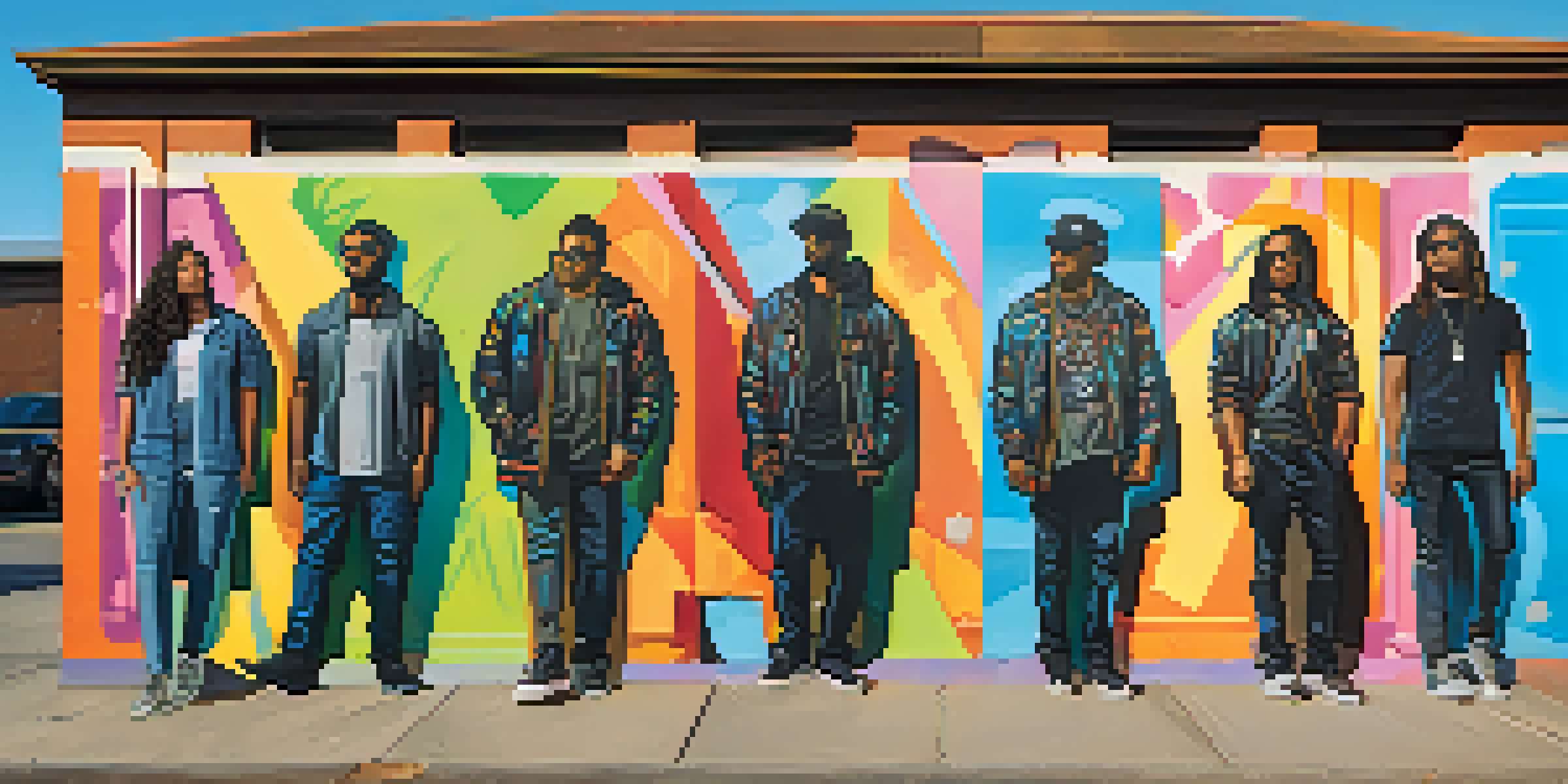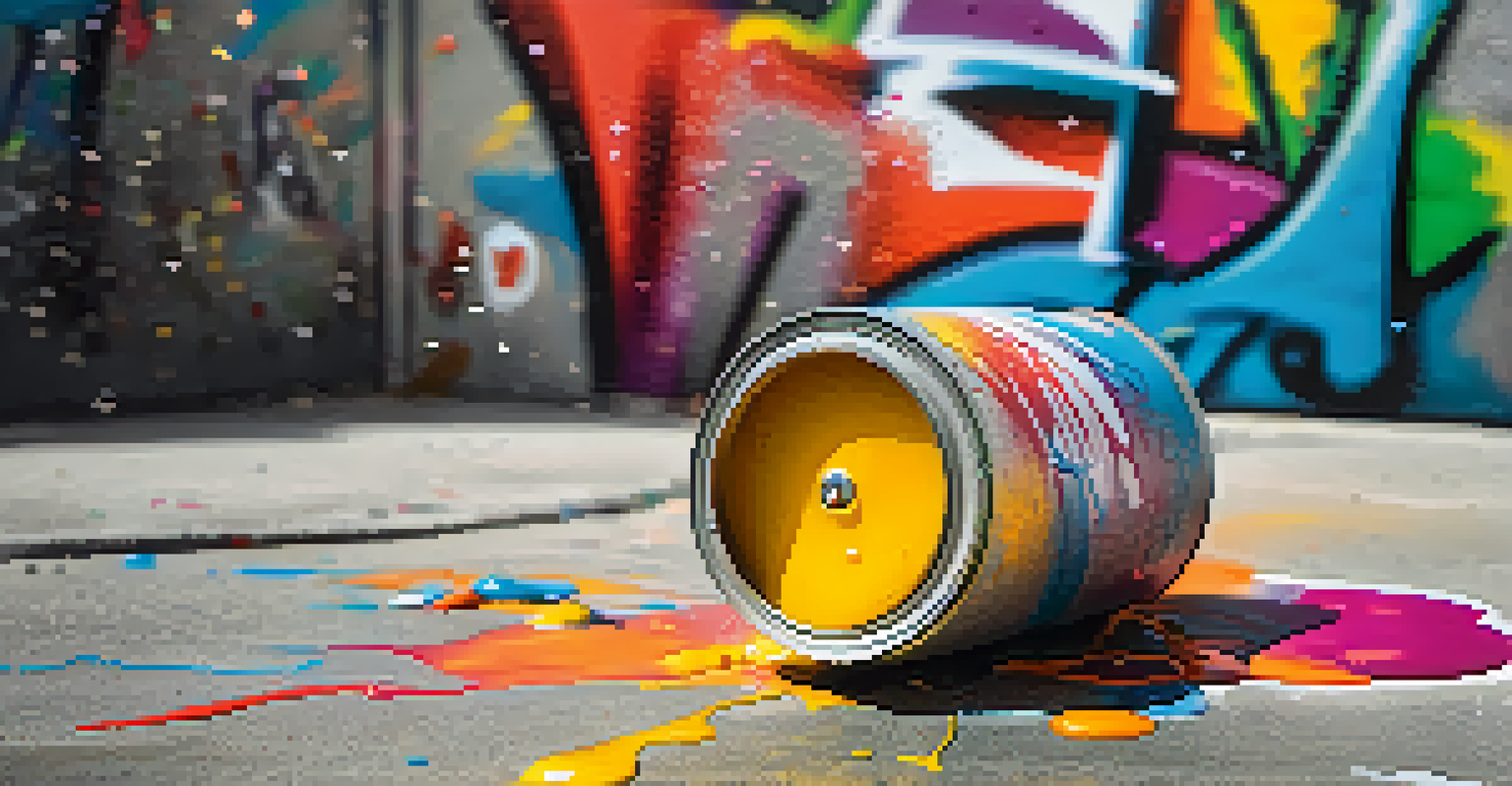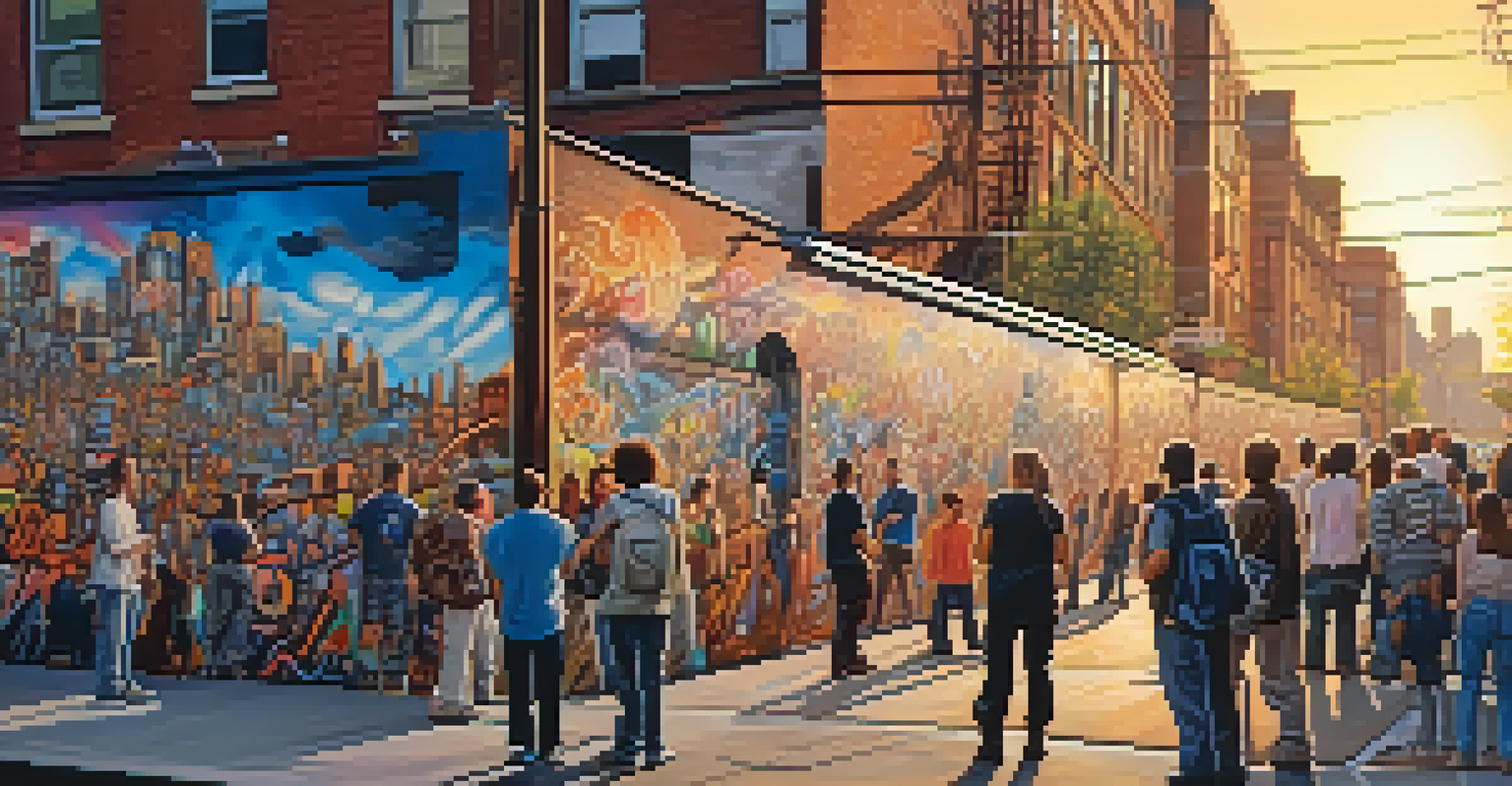Graffiti as a Powerful Voice for Social Change

The Origins of Graffiti as a Form of Expression
Graffiti has roots that stretch back to ancient civilizations, where markings on walls conveyed messages or celebrated events. Fast forward to modern times, and graffiti has evolved into a dynamic form of urban art that reflects the sentiments of the community. It's not just spray paint on a wall; it's a canvas for voices often unheard in traditional media.
Art is a way of survival.
From the streets of New York in the 1970s to the walls of Berlin, graffiti has served as a powerful outlet for self-expression. Artists use this medium to share personal stories or address societal issues, creating a dialogue with the public. This evolution showcases how graffiti has transcended mere vandalism to become a respected form of cultural commentary.
Understanding the origins of graffiti helps us appreciate its role in social movements. When artists take to the streets, they're not just beautifying urban landscapes; they're igniting conversations about the world around us.
Graffiti as a Mirror of Society
One of the most compelling aspects of graffiti is its ability to reflect societal issues. When you walk through a city, the murals and tags often provide insight into local struggles, triumphs, and cultural narratives. This makes graffiti a powerful tool for social commentary, capturing the pulse of the community in real-time.

For example, during times of political unrest, graffiti can serve as a rallying cry. Artists often use their work to protest injustices, challenge authority, or bring attention to marginalized voices. This artistic rebellion not only makes a statement but also resonates with those who feel similarly disenfranchised.
Graffiti as a Voice for Change
Graffiti serves as a powerful form of social commentary, reflecting community sentiments and addressing issues often overlooked by traditional media.
By translating complex social issues into visual art, graffiti makes them accessible to a broader audience. This democratization of expression allows people from various backgrounds to engage with important topics, fostering empathy and understanding.
Famous Graffiti Artists and Their Impact
Throughout history, certain graffiti artists have emerged as icons of social change. Take Banksy, for instance; his provocative pieces often critique war, capitalism, and consumerism. Each artwork invites viewers to question the status quo and consider their role in society, effectively becoming a catalyst for change.
The role of the artist is to make the revolution irresistible.
Another notable figure is Shepard Fairey, who gained fame for his 'Obey' campaign and the iconic 'Hope' poster during the 2008 presidential election. His art not only inspired political engagement but also highlighted the importance of activism through creativity. These artists show how graffiti can transcend local boundaries and impact global conversations.
By examining the works of these influential artists, we can see how graffiti serves as a form of visual activism. Their messages resonate far beyond the walls they adorn, sparking dialogue and inspiring movements worldwide.
Graffiti and the Fight Against Injustice
Graffiti has long been used as a tool in the fight against social injustice. From racial equality to gender rights, artists often leverage this medium to voice their frustrations and advocate for change. The vibrancy and visibility of graffiti make it an ideal canvas for urgent messages that demand attention.
For instance, during the Black Lives Matter movement, graffiti surged as a powerful platform for expression. Murals depicting George Floyd and other victims of racial violence became symbols of resistance and solidarity, turning public spaces into sites of remembrance and activism. This illustrates how graffiti can galvanize communities around shared causes.
Community Shapes Graffiti Art
Local influences and collaborative projects empower artists to create works that resonate with their neighborhoods, fostering pride and unity.
In this way, graffiti acts as both a reflection of societal challenges and a call to action. It invites individuals to engage with pressing issues, encouraging them to reflect on their beliefs and take a stand.
The Role of Community in Graffiti Art
Community plays a crucial role in the world of graffiti, shaping its themes and messages. Local artists often draw inspiration from their surroundings, using their art to articulate the hopes and struggles of their neighborhoods. This connection fosters a sense of belonging and pride among community members.
Moreover, collaborative mural projects can unite diverse groups, transforming public spaces into shared canvases. These initiatives often involve local artists, residents, and organizations working together to create pieces that reflect the community's identity. This collective effort strengthens social bonds and encourages dialogue.
By engaging with the community, graffiti artists not only enrich their work but also empower others to express themselves. This participatory approach highlights the importance of inclusivity in art, making graffiti a true reflection of the voices within a community.
The Intersection of Graffiti and Technology
As technology continues to evolve, so does the world of graffiti. Artists today have access to digital tools and social media, allowing them to share their work with a global audience. This shift not only amplifies their messages but also creates a virtual community of artists and supporters.
Platforms like Instagram have transformed the way graffiti is perceived and appreciated. Artists can showcase their work, connect with like-minded individuals, and even collaborate across distances. This accessibility opens doors for emerging artists who might not have had the opportunity to share their voice otherwise.
Technology Amplifies Graffiti's Reach
With the rise of digital tools and social media, graffiti artists can now share their messages globally, creating a virtual community while facing challenges of commercialization.
However, this intersection of graffiti and technology also raises questions about authenticity and commercialization. As the art form gains popularity online, it’s essential to navigate these challenges while preserving the original spirit of rebellion and expression that graffiti embodies.
The Future of Graffiti as a Social Movement
Looking ahead, the future of graffiti as a medium for social change appears bright. As more artists embrace this form of expression, we can expect to see an even greater diversity of voices addressing pressing issues. Graffiti will continue to serve as a platform for marginalized groups, giving them the visibility they deserve.
Additionally, as society grapples with challenges like climate change and inequality, graffiti will likely evolve to reflect these themes. Artists have a unique ability to distill complex ideas into striking visuals, making them powerful allies in the fight for social justice.

Ultimately, graffiti will remain a powerful voice for change, inspiring future generations to engage with their communities and advocate for a better world. As long as there are stories to tell and injustices to confront, graffiti will thrive as a vibrant medium for expression.